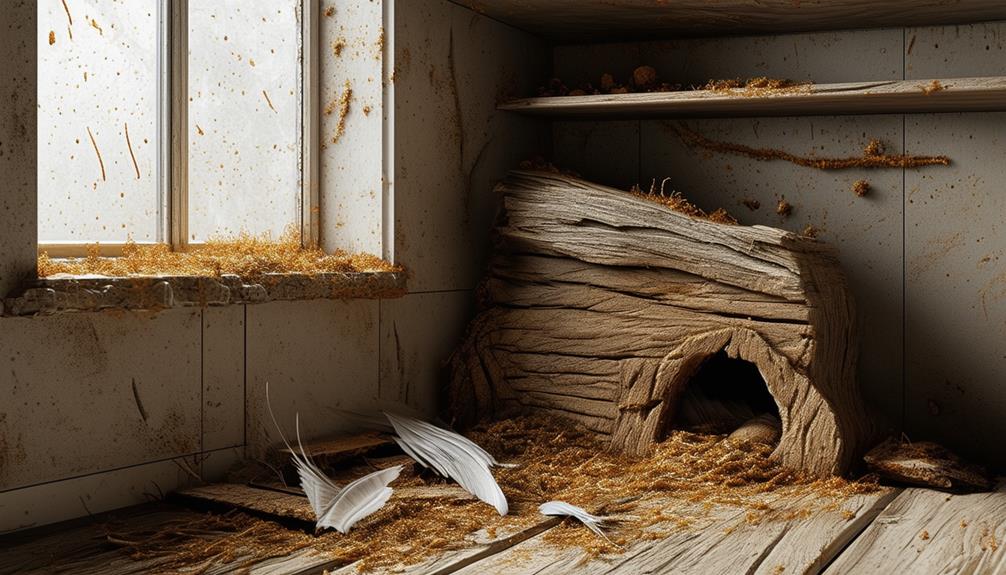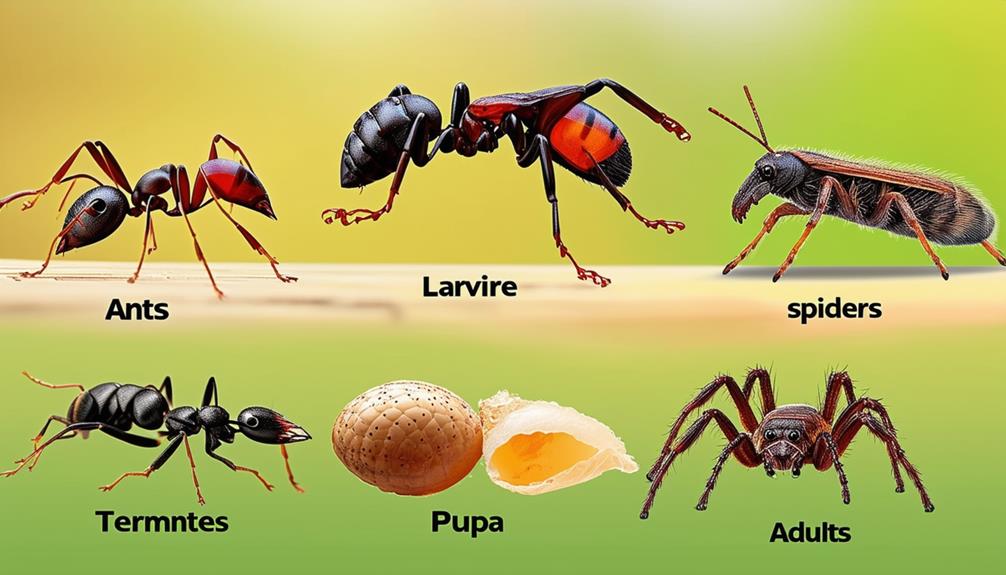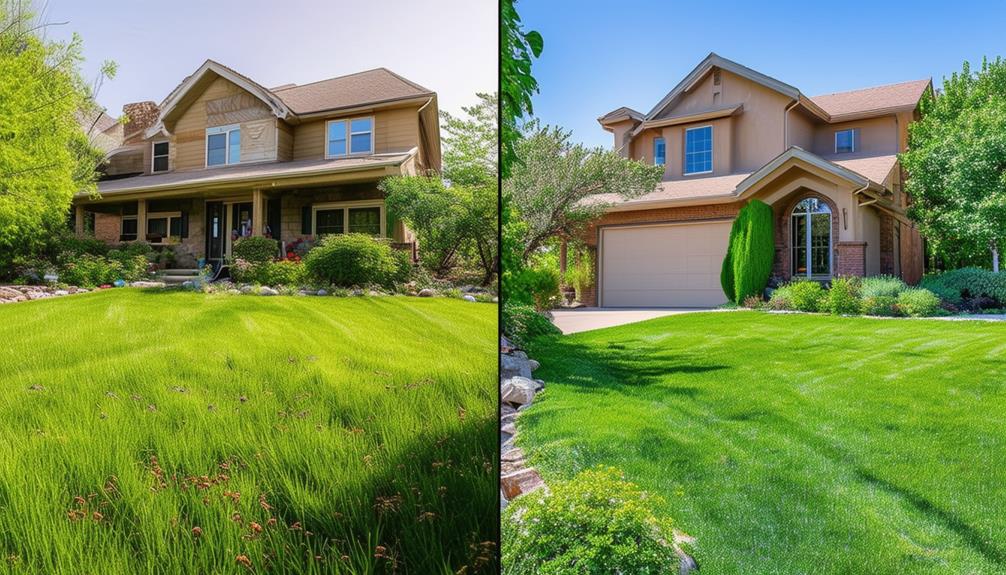As a homeowner in Utah, you might be unknowingly housing destructive termites within your walls. Discovering the top 5 signs of termite activity could save you from costly repairs and structural damage. From hollow-sounding wood to the emergence of termite swarmers, these subtle hints could be your first warning of an infestation silently feasting on your home. Stay alert and informed to protect your property from these silent invaders.
Key Takeaways
- Hollow-sounding wood when tapped on surfaces.
- Small holes or tunnels in wood structures.
- Sagging or buckling floors from termite damage.
- Presence of mud tubes constructed by termites.
- Emergence of dark brown termite swarmers with wings.
Hollow-Sounding Wood
When conducting a termite inspection in Utah homes, listening for a hollow sound when tapping on wood surfaces can provide crucial evidence of internal wood damage caused by termite activity. Termites are known to feed on wood from the inside out, creating a thin layer on the surface that may sound hollow when tapped. This hollow sound is a common sign of termite tunneling and feeding within the wooden structures of a home. Areas such as door frames, baseboards, and window sills are prime locations to check for this hollow-sounding wood, as termites often infest these areas.
Professional termite inspections utilize techniques like sounding for hollow wood to accurately assess and confirm the presence of termite damage. This method allows inspectors to pinpoint areas where termites have been active, helping homeowners address the issue promptly. By being vigilant and attentive to the sounds of hollow wood during inspections, early detection of termite activity can potentially save homeowners from extensive damage and costly repairs.
Small Holes or Tunnels
Small holes or tunnels found in wood structures of Utah homes can serve as significant indicators of termite activity. Termites, as they establish their colonies, create these tunnels by burrowing through wood. These tunnels not only provide shelter and protection for the termites but also grant them easy access to food sources within the structure. The presence of these small holes or tunnels is a clear sign of an ongoing termite infestation within the wood.
Regular inspection of wood structures is vital to detect these signs of termite activity early on. Prompt action following the discovery of such indicators is essential to address the infestation and prevent further damage. Termites can cause significant harm to the structural integrity of homes, making it imperative to address any signs of termite activity swiftly. If you notice small holes or tunnels in the wood of your home, it's advisable to seek professional assistance to conduct a thorough inspection and implement appropriate termite control measures.
Sagging or Buckling Floors
Sagging or buckling floors in Utah homes may indicate structural damage attributed to termite activity, particularly weakening the wood flooring and resulting in an uneven or spongy surface. Termite infestations can cause significant harm to the wooden structures within homes, including the floors. As termites tunnel through the wood, they compromise its integrity, leading to the characteristic sagging or buckling observed on the surface.
If you notice your floors starting to buckle or become uneven, it could be a warning sign of a termite infestation in your Utah home. Addressing this issue promptly by inspecting the affected areas for termite activity is important to prevent further deterioration and expensive repairs. Ignoring sagging floors may exacerbate the structural damage caused by termites, potentially leading to more extensive and costly repairs in the future.
Acting swiftly upon noticing these signs is vital to mitigate the impact of termite activity on your home's wooden flooring.
Presence of Mud Tubes
The presence of mud tubes in Utah homes serves as a definitive indicator of active termite infestation within the property. These mud tubes, constructed from a mixture of dirt and termite waste, are the handiwork of subterranean termites. They serve as important passageways for termites to travel between their underground nests and food sources within the structure of a home. The appearance of these mud tubes on exterior walls or foundation areas is a clear sign of termite activity in Utah homes.
Mud tubes play a significant role in maintaining a humid environment that's necessary for the survival and feeding habits of termites. These structures not only provide protection for the termites but also facilitate their destructive activities. Identifying and eliminating mud tubes is crucial in controlling and preventing termite infestations, as failure to do so can lead to severe structural damage within Utah properties. Effective termite control strategies often involve targeting and eradicating these mud tubes to disrupt the termites' access points and colonizing efforts.
Emergence of Termite Swarmers
The emergence of termite swarmers marks an important stage in their reproductive cycle, signaling the potential establishment of new colonies in Utah homes. These reproductive adults, also known as winged termites, are characterized by their dark brown coloration and possession of two pairs of wings, distinguishing them from flying ants. Despite their wings, termite swarmers are weak flyers and are often found inside homes, indicating a potential termite infestation.
Observing termite swarmers in Utah homes is a clear indicator of ongoing termite activity, necessitating immediate inspection to assess the extent of the infestation. Identifying and addressing these swarmers promptly is vital in order to prevent significant damage to the structure of homes in Utah. Given their role in establishing new colonies, the presence of termite swarmers shouldn't be taken lightly, and swift action is recommended to mitigate potential harm.
Frequently Asked Questions
How Do You Tell if Termites Are Active in Your House?
To tell if termites are active in your house, look for wood damage, mud tubes, swarmers, hollow sounds, frass piles, termite wings, bubbling paint, sagging floors, and termite tunnels. These signs indicate termite activity.
What Do Termites Look Like in Utah?
In Utah, termites vary in appearance based on their role within the colony. From kings and queens with large sizes to worker termites with a translucent look, identifying these pests is essential for termite control.
What Month Are Termites Most Active?
During the peak months of March to August in Utah, termites are most active. Swarm season hits hard, so be on the lookout for signs of infestation. Implement prevention measures and monitor diligently to protect your home.
How Do You Tell if You Have Termites in Your Walls?
If you suspect termite activity in your walls, look for signs like mud tubes, frass, and hollow-sounding walls. Termite damage may lead to wood destruction. Professional pest control can assist in inspecting and managing termite colonies.




